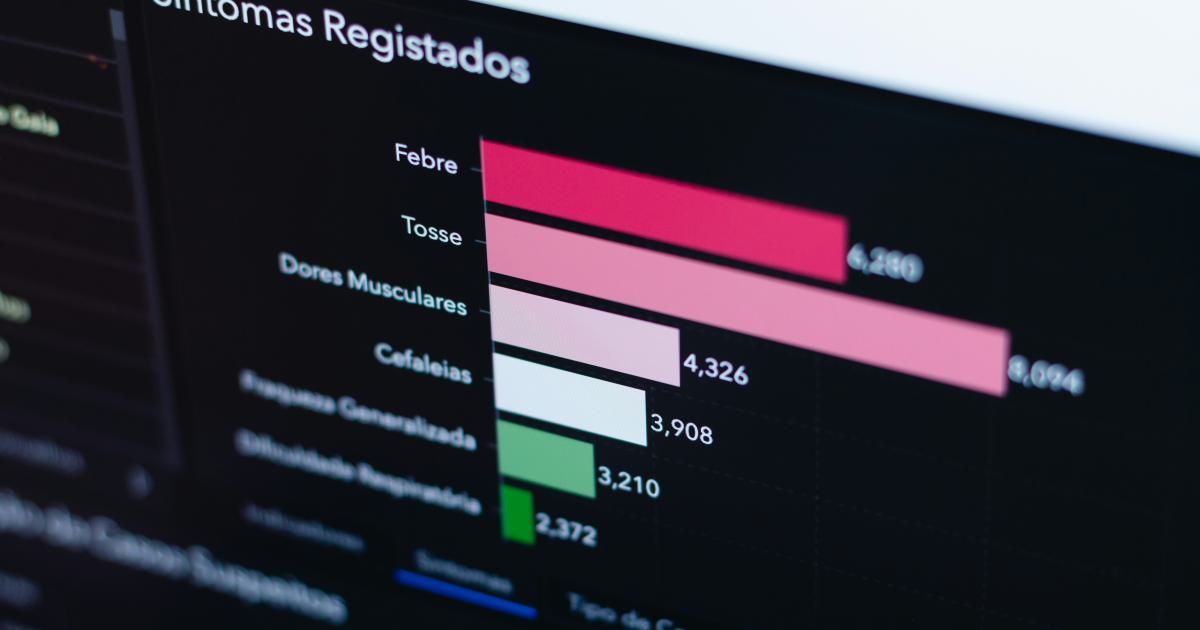Breaking the Cycle: Trend Following Trading Habits

Trend following trading habits have transformed the approach to investing and risk management for countless traders around the world. By recognizing and capitalizing on technical trends and patterns, many professionals have carved out a niche that blends rigorous data analysis with psychological discipline. In this comprehensive exploration, we dive deep into the multifaceted world of trend following trading habits—an approach that not only highlights the importance of technical indicators but also stresses behavioral psychology, risk management, and adaptive strategy. Throughout this article, the term trend following trading habits will be seamlessly integrated to exemplify best practices, cautionary tales, and actionable steps for traders aiming to break the cycle of repetitive losses and inconsistent gains.
The Evolution and Historical Context of Trend Following Trading
Trend following as a trading methodology pioneered itself well before the days of high-speed computers and algorithmic trading. Its origins can be traced back to the early days of capital markets, where pioneers observed that markets often exhibit sustained trends which, when properly identified, could generate significant profit. Over decades, this strategy has evolved—a fact that underscores its enduring relevance in modern financial markets.
Early Foundations and Evolution
In the early 1900s, financial markets were primarily driven by rudimentary methods of technical observation. Analysts relied heavily on price charts, simple moving averages, and the human eye to detect market patterns. These observations formed the bedrock of what would later be formalized into trend following strategies. Over time, as markets became more sophisticated and technology advanced, traders began to adopt mechanical systems to systematically track trends. This evolution allowed for faster decision-making processes and more objective assessments of market activity, thus reducing much of the emotional component traditionally associated with trading.
In the latter half of the 20th century, notable investors and fund managers began to popularize trend following techniques. These figures showcased that adherence to a systematic approach could yield consistent returns over long periods, even amidst volatile market conditions. Trend following became more than just a strategy—it evolved into a philosophy that champions the idea of adapting to market conditions rather than trying to predict them with absolute certainty.
Technological Impact on Trend Following
The rise of computing technology significantly impacted trend following trading habits. As algorithms began to replace manual charting techniques, the speed and accuracy with which trends could be identified improved dramatically. Advanced statistical models and machine learning algorithms were integrated into trading platforms, offering traders not only the ability to detect trends but also the capacity to simulate and backtest strategies in real time. Such technological advancements allowed a broader base of traders—ranging from institutional investors to individual day traders—to effectively employ trend following trading habits.
This transformation was accompanied by the introduction of algorithmic trading systems capable of executing large volumes of trades at velocities impossible for a human. With the integration of big data analytics, traders could now evaluate patterns across multiple asset classes and timeframes, further enhancing the reliability of trend following decisions.

Key Milestones and Influencers
Some of the early proponents of trend following strategies include names like Richard Dennis and his "Turtles," a group of novice traders who were taught a simple set of rules for capturing market trends. Their subsequent success underscored the fundamental principle that adherence to systematic trading rules—driven by properly identified trends—can overcome the unpredictable nature of markets. This case study not only validated the concept of trend following but also demonstrated how quantitatively driven strategies can democratize trading by providing clear, replicable guidelines for success.
The methodology continued to evolve with contributions from academics and market practitioners who studied the statistical properties of financial time series. Pioneering researchers found that while short-term market movements are often random, longer trends tend to tell a different story—one of persistence and momentum. Their findings bolstered the argument for investment strategies that do not attempt to time the market’s turning points but rather ride the waves of continued momentum.
Core Principles and Concepts of Trend Following
Understanding trend following trading habits requires a solid grasp of its core principles. Fundamentally, the strategy is built on the belief that markets tend to move in identifiable trends—be it upward or downward—and that these trends can be exploited for profit. The key concepts include momentum, risk management, and the application of technical analysis tools.
Momentum and Moving Averages
At the heart of trend following lies the concept of momentum. Momentum strategies operate on the premise that stocks or assets which have performed well in the past will continue to perform well in the future, and vice versa for those that have lagged behind. Moving averages play a crucial role here; they smooth out price data to help reveal the underlying trend. When short-term moving averages cross above long-term averages, it is often interpreted as a signal to buy. Conversely, when the short-term moving average crosses below the longer-term average, it suggests that it may be time to sell.
The use of moving averages is not a new concept. However, its integration with other technical indicators—such as the Relative Strength Index (RSI), Bollinger Bands, and momentum oscillators—provides traders with a powerful toolkit for confirming trends and minimizing false signals. Moreover, adaptive moving averages, which adjust themselves based on market volatility, have further refined the strategy, making it more resilient during periods of economic uncertainty.
Risk Management and Money Management Practices
No discussion of trend following trading habits would be complete without a detailed look at risk management. Trend following strategies inherently involve riding market swings, but without proper risk management, severe losses can occur when markets reverse unexpectedly. This is why position sizing, stop-loss orders, and diversification are critical components. A well-defined risk management framework not only protects capital but also allows traders to remain in the game during inevitable drawdowns.
Traders often set stop-loss levels based on recent volatility measures to avoid catastrophic losses. The idea is to let profits run while cutting losses short—a principle that stands in stark contrast to the common behavioral bias of holding on to losing positions in hopes of a turnaround. In essence, trend followers accept that losses are a natural outcome in trading, but by managing risk, they ensure that no single loss can significantly derail their overall strategy.
Technical Analysis Tools in Trend Following
Technical analysis remains the backbone of trend following trading habits. Besides moving averages, other popular tools include trend lines, channels, and chart patterns like head-and-shoulders formations, triangles, and flags. These patterns help traders visually interpret market sentiment and potential price breakouts. The synthesis of various technical tools enables traders to build robust systems that can operate effectively even in unpredictable market conditions.
Modern trend-following systems frequently incorporate algorithmic models to analyze and process large data sets. Such models not only detect key trend signals but also adapt to shifting market dynamics by recalibrating parameters in real time. This technological integration into traditional technical analysis significantly enhances the effectiveness of trend following trading habits, making it accessible and actionable for traders at all levels.
Psychological Dimensions of Trend Following Trading
Building on the technical foundations, the psychological aspect of trend following trading habits is equally critical. Markets are, at their core, human constructs influenced by sentiment, rumor, and emotion. The discipline required to stick to a trend following strategy often sets successful traders apart from those who succumb to emotional decision-making.
Behavioral Biases and Emotional Discipline
Human psychology plays a significant role in trading outcomes. Cognitive biases such as confirmation bias, overconfidence, and recency bias can lead traders astray, forcing them to deviate from well-laid plans. For instance, in turbulent market conditions, many traders fall prey to the fear of missing out (FOMO) or become paralyzed by the fear of loss. Trend following trading habits emphasize the necessity of removing emotion from the equation—adhering strictly to a predefined set of rules irrespective of the market’s emotional volatility.
Traders who succeed in trend following typically develop high levels of emotional discipline. They understand that losses are an inherent part of the trading process. By focusing on risk management and clear, replicable rules, trend followers are able to create an environment in which emotions have less room to interfere. Regular reviews of trading performance, along with continuous education on market psychology, are essential for maintaining this discipline.

Mental Models and Strategic Adaptability
A key component of successful trend following is the development of robust mental models that help traders interpret market signals accurately. These mental models are formed through years of experience and continuous analysis of market behavior. By creating and refining such models, traders can better predict market movements without becoming overly reliant on any single indicator.
Moreover, adaptability is a cornerstone of the trend following philosophy. As market conditions shift, so too must the strategies employed—the rigid adherence to outdated models can become a liability. Successful trend followers constantly evolve their strategies, learning from both successes and failures. This dynamic approach ensures that they remain ahead of the curve even as market structures change.
The Role of Confirmation and Contrarian Thinking
While trend following is often about riding the momentum, it also requires a balance between confirmation and contrarian thinking. A trader must be convinced enough by a trend to commit capital, yet remain vigilant for signs that the trend may be nearing exhaustion. This duality—buying into a trend while simultaneously preparing for a potential reversal—is a delicate balancing act that many traders find challenging. However, it is this very balance that embodies the essence of trend following trading habits.
The Mathematics Behind Trend Following
For many, the quantitative nature of trend following offers comfort in its relative objectivity. The strategy is underpinned by statistical analysis and rigorous backtesting, making it both scientifically sound and practically viable. In this section, we explore some of the mathematical concepts and models that support trend following trading habits.
Statistical Analysis and Data Patterns
At its core, trend following leverages the statistical observation that financial markets exhibit periods of trending behavior that are statistically discernible from random noise. By analyzing historical price data, traders can identify patterns that suggest the continuation of an existing trend. Techniques such as regression analysis, correlation studies, and Monte Carlo simulations are frequently employed to validate these patterns. The primary goal is to reduce uncertainty by quantifying the likelihood that a given trend will persist.
Quantitative models often utilize moving averages as a baseline for analysis. For example, a simple moving average crossover strategy, where a short-term average crosses above a long-term average, is a popular signal for potential trend continuation. More complex systems may integrate exponential moving averages, which give more weight to recent prices, thereby enhancing responsiveness to current market conditions.
Backtesting and Optimization
Before deploying any trend following strategy in live trading, rigorous backtesting is essential. Through backtesting, traders can simulate how their strategy would have performed historically. This process involves running the strategy through historical price data to evaluate its profitability, drawdowns, and overall risk profile. Backtesting not only validates the soundness of the strategy but also provides insight into the parameters that require optimization.
Optimization is a nuanced process—it involves fine-tuning factors like moving average time frames, stop-loss levels, and position sizing to achieve an optimal balance between risk and reward. However, traders must also be cautious of overfitting their models to historical data, as this can lead to poor performance under future market conditions. The art of optimization lies in understanding that while historical trends provide valuable insights, the unpredictable nature of future markets demands ongoing adjustments and a willingness to refine strategy in real time.
Quantitative Models and Algorithmic Trading
The evolution of computer technology and algorithmic trading has further solidified the mathematical foundations of trend following trading habits. Today, many trading systems deploy complex algorithms that continuously monitor market conditions and execute trades without human intervention. These systems utilize a variety of statistical indicators and machine learning techniques to identify trends early and capitalize on them efficiently.
Algorithmic trading platforms have the added advantage of processing vast amounts of market data in mere seconds—identifying subtle patterns that may escape even the most experienced human trader. This computational edge has catalyzed a shift in how the trend following strategies are implemented, making them more robust and less susceptible to errors caused by human emotion or delayed reaction times.
Real-World Examples and Case Studies
To truly appreciate the effectiveness of trend following trading habits, it’s important to examine some real-world examples. These case studies highlight how systematic, data-driven approaches can yield consistent returns over time, even in volatile markets.
The Turtle Trading Experiment
One of the most celebrated case studies in the world of trend following is the Turtle Trading experiment. Richard Dennis, a legendary trader, believed that the ability to trade successfully could be taught. In the early 1980s, he recruited a group of individuals with no prior trading experience and subjected them to a rigorous training protocol based on trend following principles. The experiment’s success not only validated the approach but also demonstrated that trading can, in fact, be systematized and taught.
The Turtles adhered to strict rules regarding entry, exit, and risk management. Their success was not contingent on market predictions but on the relentless application of predefined rules. Even when markets experienced severe drawdowns, the disciplined approach of the Turtles allowed them to recoup losses systematically. Their story serves as a powerful testament to the efficacy of trend following trading habits and the importance of structured, rule-based trading.
Institutional Adoption and Hedge Fund Strategies
Many institutional investors and hedge funds today employ trend following strategies as part of their broader investment approach. Funds such as the now well-known commodities trading advisors (CTAs) have historically relied on trend following mechanisms to navigate unpredictable markets. During periods of economic turbulence, these funds often become the anchor for portfolios, delivering stability where more aggressive strategies might falter.
One notable advantage for institutional investors is the scalability of algorithmic trend following systems. With access to vast data sets and advanced computational resources, they can fine-tune and deploy strategies across multiple asset classes simultaneously. This diversification across markets not only minimizes risk but also maximizes the chances of capturing sustained trends regardless of economic conditions.
Case Study: A Modern Trend Follower's Journey
Consider the journey of a modern-day trader who decided to transition from discretionary trading to a disciplined trend following approach. Initially, their trading performance was erratic—dominated by emotional decisions and inconsistent tactics—which resulted in frequent losses. However, after adopting a well-researched trend following system that integrated technical tools and strict risk management protocols, the trader experienced a transformation. By backtesting the system, controlling risk with dynamic stop-loss orders, and regularly reviewing market conditions, the trader began to see a consistent improvement in performance metrics. Today, this trader not only achieves more stable returns but also reports lower stress levels and improved decision-making clarity under volatile market conditions.

Implementing Trend Following Trading Habits: A Step-by-Step Guide
Adopting trend following trading habits requires both a change in mindset and the implementation of practical, actionable steps. For those interested in breaking the cycle of erratic trading behavior and embracing a disciplined strategy, the following guide provides a comprehensive roadmap.
Step 1: Establish Clear Trading Objectives
Before diving into the technical aspects, it’s crucial to define what you want to achieve. Are you looking for long-term growth, capital preservation, or short-term gains? Setting clear objectives helps tailor your trend following strategy to meet your individual needs. Establish benchmarks for performance and risk tolerance to ensure that your strategy evolves in alignment with your goals.
Step 2: Develop a Systematic Trading Plan
A systematic trading plan is the heart of trend following trading habits. This plan should outline explicit criteria for entering and exiting trades, including technical signals such as moving average crossovers, breakouts, and momentum indicators. Equally important is the inclusion of well-defined risk management protocols. For example, decide in advance what percentage of your capital you are willing to risk on any single trade, and employ stop-loss orders to enforce this rule.
Step 3: Integrate Effective Risk Management Strategies
Risk management is a non-negotiable aspect of trend following. Identify the potential volatility of the assets you plan to trade and set appropriate stop-loss levels. Diversification across asset classes can also mitigate risk. Employing a position-sizing strategy, where the size of each trade is determined by the volatility of the asset, ensures that you do not overexpose your portfolio to any single market movement.
Step 4: Utilize Backtesting and Simulation Tools
Before implementing your strategy with live capital, use backtesting software to simulate how your trend following approach would have performed historically. This step is essential for fine-tuning your parameters and understanding the behavior of your trading system under various market conditions. Expect adjustments based on your backtesting results and remain flexible—financial markets are constantly evolving, and your strategy should evolve with them.
Step 5: Embrace Technology and Automation
In today’s digital age, technology plays a critical role in refining trading strategies. Leverage algorithmic trading platforms and data analytics tools to execute your trend following strategy with precision and speed. Automation can help reduce emotional biases by executing trades based solely on pre-determined criteria. Additionally, real-time monitoring tools can keep you informed about market shifts, ensuring your strategy remains adaptive and responsive.
Step 6: Regularly Review and Adjust Your Strategy
The market is an ever-changing environment, so continuous review and adjustment of your strategy are imperative. Set aside time periodically to analyze your trading performance, identify any persistent shortcomings, and make the necessary adjustments. This iterative process of review, feedback, and adjustment is critical to a successful trend following trading system.
Expert Tips for Long-Term Success
Consistency over perfection: Accept that losses are part of the game and focus on long-term consistency.
Education is continuous: Stay updated with market trends, evolving technical tools, and lessons from both your successes and failures.
Keep a detailed trading journal: Document your trades, your rationale, and the outcomes to identify patterns in both behavior and market responses.
Remain patient: Recognize that trend following trading habits typically yield results over longer time horizons. Avoid the temptation of chasing quick profits.
Tools and Technology: The Modern Trader’s Arsenal
Technological advancements have empowered traders to implement trend following trading habits more effectively than ever before. The integration of advanced analytics, machine learning, and high-frequency trading platforms has streamlined the process of trend identification and execution.
Data Analytics and Real-Time Indicators
Modern trading platforms are equipped with an abundance of analytical tools that can process financial data in real time. These platforms provide insights into market momentum, volatility, and overall trend direction. The application of quantitative models helps in making informed decisions and reduces the guesswork that typically accompanies discretionary trading. By utilizing a combination of historical data and real-time indicators, traders can develop a forecast of potential market movements that is both data-driven and robust.
Algorithmic and Automated Trading Systems
Algorithmic trading has revolutionized the way traders approach the markets. With the automation of trade execution, the emotional pitfalls of manual trading are minimized, leading to more consistent application of trend following trading habits. These systems use predefined parameters to execute trades instantly, ensuring that opportunities are captured as they emerge. With continuous monitoring, algorithms can also adjust trading parameters in real time, providing a dynamic edge when market conditions fluctuate unexpectedly.
Navigating Trading Platforms and Software
There is a myriad of trading software solutions available to the modern trader. From well-known platforms that offer backtesting services to comprehensive risk management modules, the technological ecosystem is designed to support trend following strategies at every level. Selecting a platform that is not only user-friendly but also customizable to your specific trading needs can be a significant factor in achieving long-term success. For instance, platforms that allow integration with external data feeds and that support algorithmic customization provide a competitive advantage in rapidly evolving markets.

The Future of Trading Technology
As the field of artificial intelligence and machine learning continues to advance, the future of trend following trading habits looks promising. These technologies are expected to further automate complex tasks, reduce latency, and provide even deeper insights into nuanced market behaviors. The adoption of blockchain technology and distributed ledgers may also enhance transparency and security, adding another layer of confidence for traders implementing trend following strategies.
Challenges, Limitations, and Misconceptions
Despite its numerous benefits, trend following trading habits are not without their challenges. Understanding these pitfalls is a critical part of evolving a successful trading strategy.
Common Pitfalls in Trend Following
One of the primary challenges in trend following is whipsaw—a situation where traders are caught in rapid market reversals that trigger multiple stop-loss orders. Whipsaw can deplete trading capital if not managed properly. Additionally, markets that exhibit choppy, range-bound behavior may not lend themselves to clear trend signals, leading to false entries and exits.
Conceptualizing market noise versus genuine trends also poses a significant challenge. Traders must develop the discernment to filter out erratic price movements that do not reflect a true market trend. This is where the importance of backtesting and parameter optimization cannot be overstated.
Misconceptions About Trend Following
A common misconception is that trend following is a “set-and-forget” strategy. In reality, while the rules may be systematic, continuous monitoring and adjustment are necessary to adapt to changes in market dynamics. Another misunderstanding is the belief that trend following strategies guarantee success. Although they reduce emotional risk, they are not immune to market anomalies and unexpected geopolitical events that can drastically alter market momentum.
Strategies for Overcoming Limitations
Traders can overcome these challenges by incorporating complementary strategies such as diversification and adaptive risk management. Regularly reviewing market conditions and ensuring that stop-loss and take-profit levels are recalibrated in line with market volatility can minimize the impact of false signals. Moreover, staying educated on emerging trading technologies and market research can empower traders to refine their trend following systems continuously.
Conclusion: Breaking the Cycle and Embracing Consistency
Trend following trading habits offer a structured, disciplined approach to navigating the unpredictable world of finance. By combining technical analysis, risk management, psychological resilience, and cutting-edge technology, traders can break the cycle of emotional decision-making and inconsistent outcomes. This comprehensive exploration has shed light on the evolution, principles, mathematical underpinnings, and practical steps of trend following trading habits, while also addressing the common pitfalls and challenges encountered along the way.
Successful implementation of any trading strategy hinges on the continuous fusion of education, self-assessment, and technological adoption. It is this dynamic interplay that allows traders not only to survive turbulent market conditions but also to capitalize on emerging opportunities. As you integrate these insights into your trading practice, remember that staying adaptable, patient, and dedicated to your tactical framework is key to long-term success.
In the end, breaking the cycle of reactive trading requires a commitment to a disciplined approach—one that balances data-driven insights with a keen awareness of behavioral patterns. Embrace the journey, and let trend following trading habits guide your path towards consistent profitability and a more resilient trading mindset.
Unleash the Power of Automated Trading Analysis
Are you struggling to keep up with the fast-paced trading world? TrendSpider empowers you with cutting-edge tools for optimal strategy execution.
Our automated technical analysis suite eliminates guesswork, backtests strategies, and delivers real-time alerts, saving you valuable time and effort.
Annika Eriksson
19 posts written





